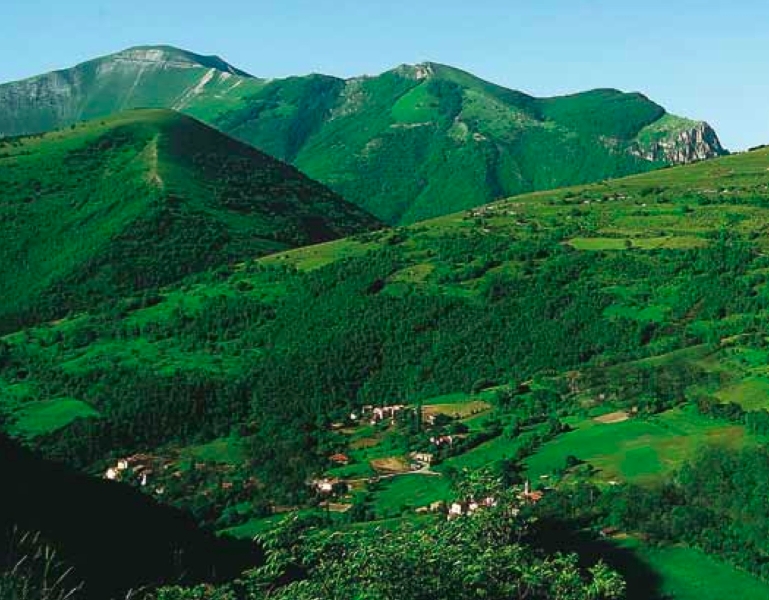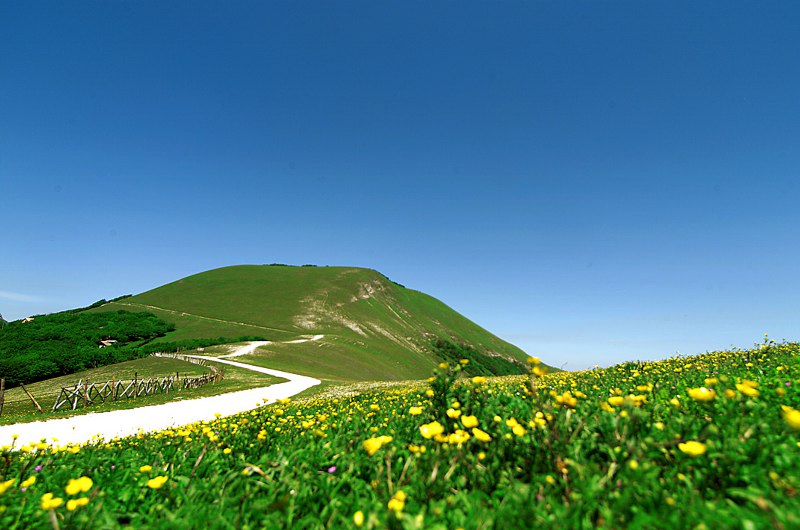
Mount Cucco Park
This post is also available in:
 Italiano (Italian)
Italiano (Italian)
Mount Cucco Park includes the territory located on the north-east border of Umbria, delimited by the ridge of the Apennine mountains, the historical Via Flaminia route, the Sentino, and the Chiascio rivers. Mount Cucco (5.137 ft) is actually part of those peaks.
The resident population does not exceed 7.000 people and human activity is exclusively focused on wood and pasture management. The valley floor is largely used for agriculture, but intensive cultivation has ever been carried out.
There are many small craft and manufacturing businesses in the park area, as well as hospitality and catering facilities that support and sensibly improve the visitors’ experience.
The most important cities nearby, in terms of size and cultural heritage, are Gubbio (to the north) and Gualdo Tadino (to the south).
The park features many underground waterways, mineral sources, large pristine beech woods, and karstic caves that cannot be violated by mass attendance. It is where wolves and golden eagles thrive undisturbed. There are very few historical settlements, but the whole area is rich in cultural and artistic heritage, as well as in evocative hermitages.
Mount Cucco Park is an ideal place for mountain sports including gliding, speleology, cross-country skiing, and trekking.
The mountain ranges at altitudes between 2.952 and 4.921 ft are generally covered with tall forests. That’s the realm of beeches with thick foliage and bare, slender trunks – they rise to support their leaves, constantly struggling for sunlight.
There is no shortage of tree specimens on those “mountain plains”, including maples, wild cherries, and hornbeams (the latter species is quite rare though).
During the spring, in the small and large meadows among the woods, there is a blooming of lively colors: white snowdrops, pink crocuses, yellow buttercups, violets, primroses, scorpion grasses, and wild orchids. Surrounded by all that intense fragrance, small leaves of wild mint also appear. At the end of spring or at the outbreak of summer, the hidden clearings of the wood benefit from a little more sunlight: fragile and rosy martagon lily blossoms, together with very tasty strawberries and small clusters of red currant – a real treat for gourmets and occasional trekkers alike. There’s also chives, the queen of traditional cuisine.
Hemlock plants grow almost everywhere at those altitudes, easily recognizable thanks to their white umbrella-shaped inflorescence. The same thing happens with hellebores.
Below 3.280 ft, the vegetation gets even more variegated including aromatic plants; the wood gets more and more though, gradually turning everything is a thorny scrub, where visitors may only venture along the official trails. Hornbeams are the predominant species, then there are several types of maples, ashes, dogwood, wild cherry trees, hazel (locally known as “avellana”), strawberry trees, hollies, wild laurels, and boxwood. Holm oaks, downy oaks, and turkey oaks appear only where there is enough sunlight. Holm oaks in particular are frequently found clinging to the high limestone walls, with their roots forced into the rock fractures: there are just some tiny dark groves of small specimens, all of them more than a few centuries old.
Butcher’s broom is common in the more humid and shady parts. Further downstream and on the first mountain slopes, there is the infesting black locust, improperly called “acacia”, with large clusters of white flowers.
On the reddish walls of “Orrido del Ponte a Botte”, the rare Ephedra has been recently spotted: a shrubby and bushy plant with small scaly deciduous leaves and tiny flowers.
Downstream, the park degrades into a highly cultivated belt. It is the Upper Chiascio Valley, dotted with villages and settlements. But it is still a very evocative place, where visitors can see the cultivated fields surrounded by rows of poplars, willows, maples, and oaks – an unmistakable testament to poor agricultural techniques of the past.
This post is also available in:
 Italiano (Italian)
Italiano (Italian)
Contatti
Sede del Parco regionale del Monte Cucco: Villa Anita, via G. Matteotti, 52 - Sigillo(PG)
075 9177326
info@discovermontecucco.it


